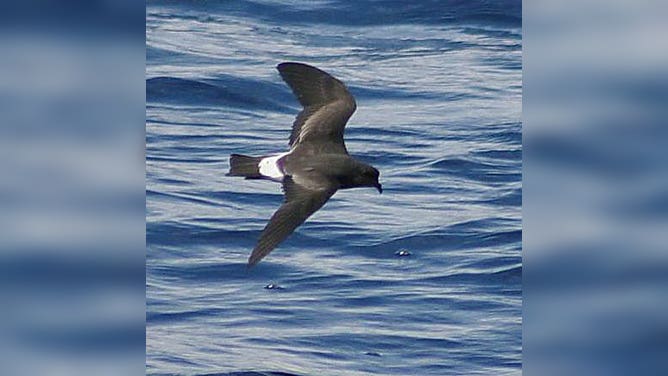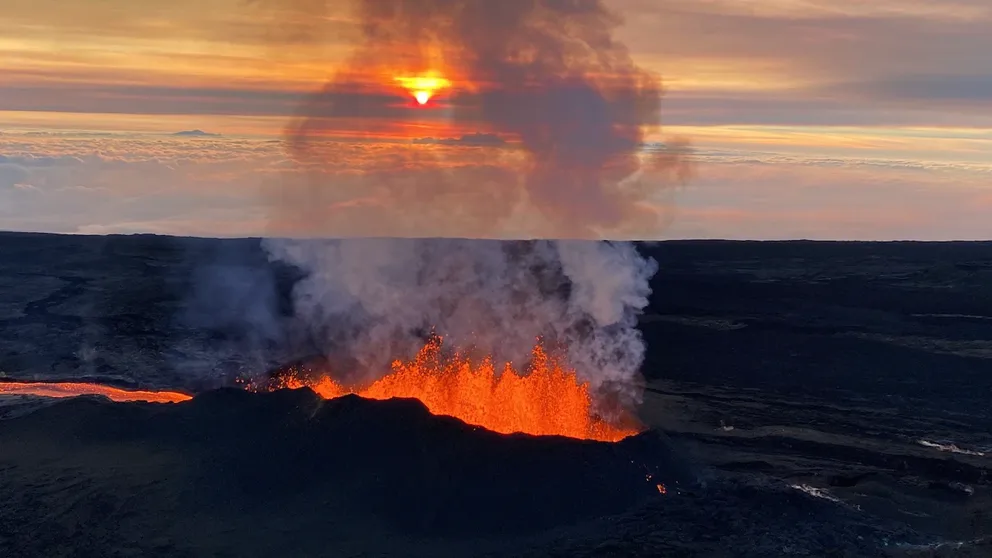Rare Pacific seabird escapes eruption of Hawaii’s largest volcano
Mauna Loa started erupting on November 27 and shows no signs of slowing down. The lava flow was reported to slowly be approaching the Daniel K. Inouye Highway.
Rare seabird leaves burrow in Mauna Loa
A rare seabird, whose burrow was found on the Mauna Loa volcano, is believed to have not only escaped the eruption, but is also thought to be the first time a newborn has ever been spotted at Hawaii Volcanoes National Park.
HILO, Hawaii – A rare seabird, whose burrow was found on the Mauna Loa volcano, is believed to have not only escaped the eruption, but the occasion may also be the first time a newborn has ever been spotted at Hawaii Volcanoes National Park.
The Hawaiian band-rumped storm-petrel, also known as the ʻakēʻakē, is an endangered species with an estimated population of 150,000 around the world.
Biologists discovered its burrow during the fall with the help of a detection dog and placed a camera outside the nest to monitor its progress.
"Biologists in the park have known of the presence of ʻakēʻakē on Mauna Loa since the 1990s. In 2019, ʻakēʻakē burrow calls were recorded during acoustic monitoring which indicated nesting. The lack of visual signs like guano at their nest sites make them extremely hard for humans to locate," said Forbes Perry, a biologist at the University of Hawaii.
The National Park Service said in the weeks before the eruption, video captured the newly born, fuzzy seabird emerging from the mountainside.
SPACE TRAINING FACILITY IN HAWAII SAFE FROM MAUNA LOA LAVA FLOW

A band-rumped storm-petrel over the ocean.
(Hawaii Trail and Access System / FOX Weather)
Rangers said once the bird reached the fledgling stage, with feathers and the ability to fly, it likely took off into the skies over the vast Pacific Ocean.
"The birds spend most of their life at sea and return to land for nesting," said Sierra McDaniel, a program manager of natural resources at Hawaii Volcanoes National Park.
VOLCANO CAM: WATCH MESMERIZING LIVE VIEWS OF MAUNA LOA’S LAVA FOUNTAIN ERUPTING
The bird’s former burrow is believed to be about three miles from the nearest lava flow.
"While many are transfixed by the Mauna Loa eruption that began on November 27, Forbes Perry and other conservationists are equally excited by the discovery of the ʻakēʻakē nest," the NPS stated.
Lava slowly making its way down Mauna Loa slope
The U.S. Geological Survey reports an elongated fracture known as fissure 3 continues to produce large amounts of lava on the volcano’s northeast side.
Volcanologists do not know when the eruption will abate, but stress it is likely that it is only a matter of time before the flow reaches the Daniel K. Inouye Highway. The roadway is the main route that connects the communities of Hilo and Kona on Hawaii’s Big Island.
LAVA FLOW THREATENS TO CUT OFF MAIN THOROUGHFARE ON HAWAII’S BIG ISLAND
The eruption began on November 27, and aside from impacting rural access roads, the event has spared communities and infrastructure.
Mauna Loa volcano trespassers warned about serious dangers after unexploded ordnance found near lava field
In addition to hidden crevasses and hot lava, unexploded ordnances from a nearby military training ground also pose a serious risk.
"Lava flow advance rates may be highly variable over the coming days and week. Lava flows advance more slowly, spread out and inflate on the flat ground between Mauna Loa and Mauna Kea," the USGS said Wednesday.
At last report, the lava was just over a mile and a half away from the major roadway, but is only advancing at a rate of less than 20 feet per hour.
Hawaii County’s Civil Defense Agency stresses there is no immediate threat to homes or businesses from the eruption.




